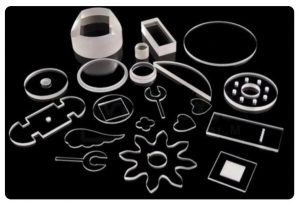
A ground grid is an essential component of electrical systems, providing a safe and reliable grounding solution. It consists of a network of conductors buried in the earth, interconnecting various equipment and facilities to establish a common reference point for electrical potential. This allows for the dissipation of fault currents into the ground, preventing damage to equipment and ensuring personnel safety.
One crucial aspect of ground grids is their ability to minimize voltage differences across large areas. By distributing current through interconnected conductors, ground grids help equalize potential throughout the system. This means that even if an unintentional electrical fault occurs at one point, such as a lightning strike or short circuit, it doesn’t cause significant voltage disparities across the entire installation.
Another important function of ground grids lies in shielding against electromagnetic interference (EMI). Electrical currents generate magnetic fields that can interfere with sensitive electronic devices and lead to malfunctions or inaccuracies in measurements. The well-designed layout and construction of a ground grid can effectively contain these electromagnetic fields within its boundaries, reducing EMI effects on nearby equipment.
In summary, a ground grid serves multiple purposes in an electrical system: establishing a safe path for fault currents to dissipate into the earth, minimizing voltage differences across facilities, and providing protection against EMI. Whether designing new installations or assessing existing ones, understanding the role and importance of ground grids is critical to ensure optimal performance and safety.
Benefits of using a ground grid
Using a ground grid offers several benefits that significantly contribute to the safety and efficiency of various industries. One key advantage is its ability to reduce the risk of electrical shock in workplace environments. By providing a low-resistance path for fault currents, a ground grid helps redirect any unwanted electricity away from personnel and equipment, minimizing the potential for injuries or damage.
Furthermore, implementing a ground grid can enhance the effectiveness of lightning protection systems. During thunderstorms or other high-voltage events, lightning strikes can pose severe risks to structures and their occupants. A well-designed ground grid serves as an excellent grounding system that helps dissipate electrical charges into the earth safely. This not only mitigates damage caused by direct lightning strikes but also reduces secondary voltage surges induced by nearby strikes.
Another often overlooked benefit of utilizing a ground grid is its positive impact on electrical system performance and reliability. Effective grounding promotes proper operation by stabilizing voltages and reducing harmonic distortions. It also helps prevent issues such as electromagnetic interference (EMI) caused by poor grounding practices, ensuring smooth communication signals for sensitive equipment like computers and telecommunication devices.
In conclusion, incorporating a ground grid into industrial infrastructure provides multiple advantages ranging from ensuring personal safety to protecting against lightning damage and enhancing overall system performance. By recognizing these benefits and understanding the importance of proper grounding techniques, businesses can create an environment that prioritizes safety while maximizing operational efficiency.
Step 1: Assessing the site conditions
When it comes to building ground grids, the first step is crucial: assessing the site conditions. This step involves gathering important information about the location where you plan to install the grid system. By thoroughly evaluating the site conditions, you can make informed decisions about the design and layout of your ground grid.
One key consideration during this assessment is the type of soil present at the site. Different types of soil have varying resistivity levels, which can affect how well your ground grid will work. Conducting a soil resistivity test will provide valuable data that will guide you in determining whether additional measures need to be taken to ensure optimal grounding performance.
Another factor to consider is any existing power or utility lines located near your project site. These lines can introduce interference or complications when designing and installing a ground grid system. Understanding their placement and potential impact on your project will help you develop an effective strategy for mitigating any issues that may arise.
Step 2: Designing the ground grid layout
Designing the ground grid layout is a crucial step in ensuring the effectiveness of your grounding system. The ground grid is responsible for dissipating fault currents and maintaining low resistance to earth, thus protecting personnel and equipment from electrical hazards. When designing the layout, it is important to consider factors such as soil resistivity, type of facility, and the anticipated fault current levels.
One key aspect of designing the ground grid layout is determining proper spacing between conductors. This ensures that fault currents are distributed evenly across the grid and that maximum performance can be achieved. Additionally, considering the resistivity of the soil helps determine if additional measures, such as deep grounding or special electrode systems, are necessary.
Another consideration when designing the ground grid layout is evaluating whether multiple grids should be interconnected or separate. Interconnecting grids provides a more extensive grounding system and reduces voltage differences across various areas, while separate grids may be suitable for specific sections with high fault currents or unique requirements. It is essential to strike a balance between complexity and practicality when deciding on interconnections to optimize both cost-effectiveness and performance.
Step 3: Selecting the appropriate materials
When it comes to selecting the appropriate materials for your ground grids, there are several factors to consider. Firstly, you need to ensure that the materials are highly conductive to allow for optimal grounding performance. Copper is a popular choice due to its excellent conductivity, durability, and resistance to corrosion.
Another factor to consider is the size of the ground grid and the load it will be subjected to. For small-scale applications or low-load areas, aluminum can be a cost-effective alternative to copper. It provides good conductivity while being more lightweight and affordable.
In addition, it is important to consider the environmental conditions in which the ground grid will be installed. If you’re dealing with corrosive environments such as coastal regions or chemical plants, stainless steel can be a suitable material option due to its high resistance against rust and corrosion.
Step 4: Installing the ground grid system
Installing the ground grid system is a crucial step when it comes to ensuring safety and protection against electrical faults in various facilities. This system consists of interconnected conductors buried underground, creating a network that helps to establish an effective grounding infrastructure.
One important consideration during installation is determining the depth at which the ground rods should be placed. Generally, burying them below the frost line is recommended to prevent any damage caused by freezing temperatures. Additionally, it’s essential to space out the ground rods properly to ensure uniform distribution of electrical current throughout the grid. A well-designed and installed ground grid can effectively dissipate fault currents, minimizing potential damage and hazards.
Furthermore, it’s important to choose suitable materials for these conductive elements of the ground grid system. Copper and copper-clad steel are commonly used due to their excellent conductivity and corrosion resistance. However, factors like soil composition must also be considered as extreme soil conditions may require alternative materials for longevity. By carefully considering these aspects during installation, facility owners can successfully establish a robust and reliable grounding infrastructure that ensures optimal safety and protection against electrical faults.


